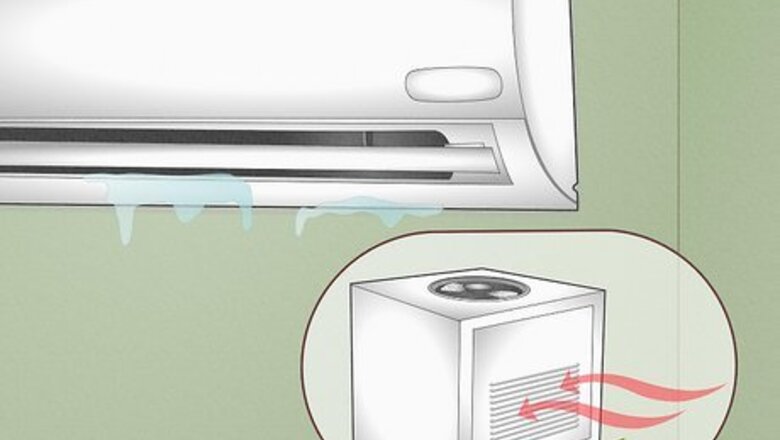
views
- Clean the coil inside of your AC system and wipe the pan underneath it with soap and water.
- Change the filter that sits on the inside of the AC’s grill. If it’s a reusable filter, clean it with soap and water.
- Pour bleach or drain cleaner down the drain line to clear blockages.
- Contact an HVAC service technician if you can’t get your unit to stop leaking by cleaning it and making basic repairs.
Why Water Forms in an Air Conditioner
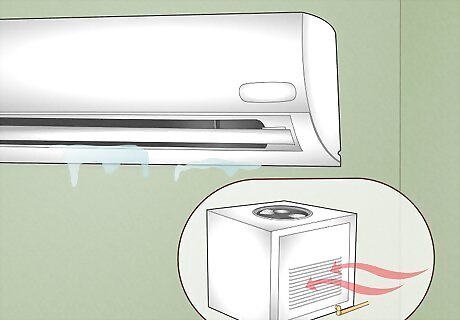
Condensation develops when hot air cools on your AC’s coils. You ever notice sweat forming on the outside of a glass on a warm day? That’s basically what’s happening with your AC unit. The evaporator coil inside your AC unit cools off the hot air that gets pulled in from outside. Normally, this condensation is drained outside through a drain line, but if something is wrong it can leak elsewhere. These AC systems are known as “mini-split” or “ductless” systems. The split name refers to a regular AC system being “split up” for different rooms. The ductless part refers to the absence of ducts.
Solutions
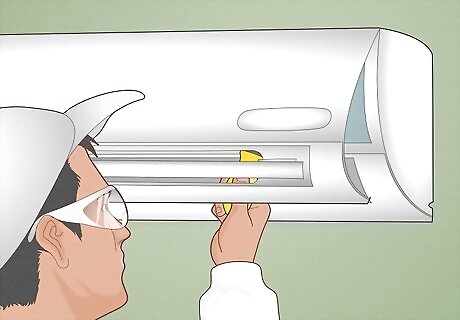
If it’s a new system, contact the installers to fix their work. A new AC system shouldn’t leak. However, it may leak if the contractor didn’t check their work or they installed the unit incorrectly. None of this should fall on your shoulders, though. Reach out to the installer. If they’re reputable at all, they’ll come back and fix their work.
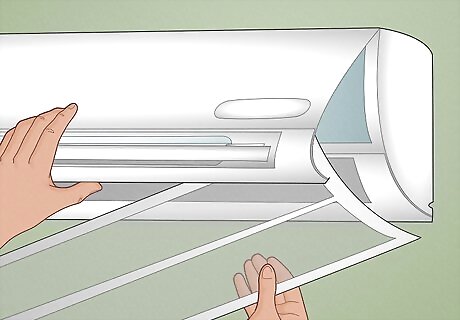
Change or clean the air filter inside of your grill. A clogged air filter can cause condensation to build up and drip. Pop the grill of the split system open and look on the inside to find your air filter. If it’s disposable, purchase a replacement and slide it into the slots on the grill. If it’s a reusable filter, remove it and clean it thoroughly with soap and water. Dry the filter by hand and put it back into place. You’ll probably see drips underneath the system on the floor if the filter is clogged; it won’t usually be a pool of water.
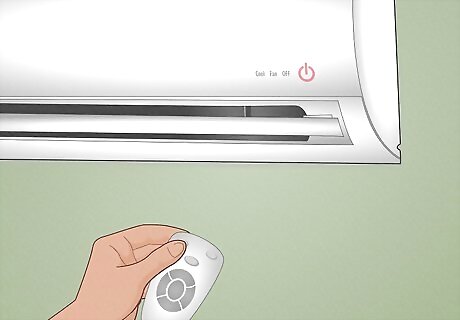
Give the system a break if you run it for extended periods of time. If you run your AC 24/7, the system is more likely to leak. Ductless systems are not designed to run forever. The coils need time to thaw out eventually, and a filter will fill up with debris much faster if it never gets a break. When you aren’t in the room, shut the AC off. If you’re in the room for an extended period of time, shut it off every few hours to give it time to rest. Remember, split ductless systems aren’t designed to heat more than 1-2 rooms, so you aren’t getting much benefit from running an AC unit if you aren’t nearby.
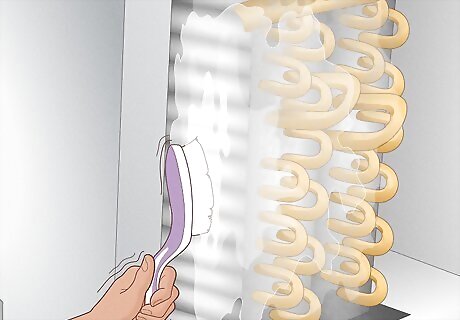
Clean your evaporator coil with soap and water. A filthy evaporator will get clogged and drip water. The evaporator coil is under the big panel on the front of your ductless system. With your AC off, pop that panel open use a soft brush to clear any debris or gunk. Then, mix some warm water and soap. Dip a rag or sponge in the solution and wipe the coils by hand. Let the coil air dry before turning your AC system back on. If you’ve got central air and the unit in your basement is leaky, try cleaning the coils inside of your condenser outside with warm water and soap.
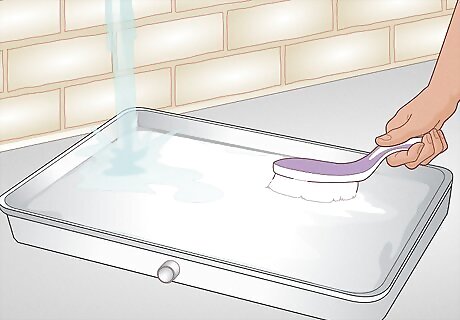
Scrub the drain pan to remove any buildup. A dirty drain pan can make it impossible for water to drain. Rinse the pan under warm water and scrub it clean with a soapy rag. The drain pan is located at the very bottom of the system. When condensation builds up, it spills into the pan which diverts the water into the drain. If it’s dirty, the water may spill over. Let the pan air dry before running your AC again. Refer to your AC system’s manual if you can’t figure out how to remove the drain pan. On some systems it can be a little awkward to remove. Typically, there are clips that hold it inside the frame of the system.
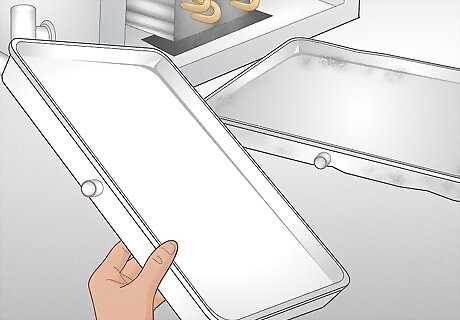
Replace the drain pan if it’s damaged or warped. Open the system and inspect the panel that rests on the bottom of your AC unit. Is it cracked, damaged, or warped? If so, purchase a replacement pan for your model and install it. The drain panel is responsible for diverting water to the drain line, so if it’s malfunctioning the water will end up running down your wall. You typically need to replace your drain pan every 12-15 years or so.
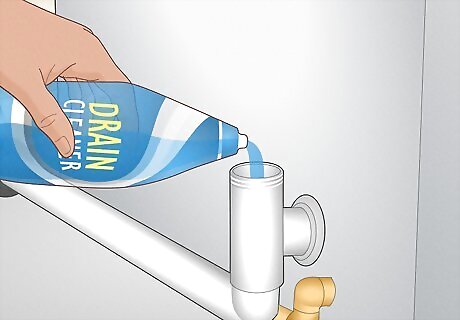
Pour cleaning fluid down the drain line to unclog it. If the drain line is stuffed, the water won’t have anywhere to go. The drain line is either inside of the wall, or running along the wall next to (or behind) the system. Follow it to where it feeds into your system. Pop the front of the system off and find the opening for the drain. Insert a funnel into the opening and slowly pour drain cleaner into it. This should break up any mineral deposits or blockages. Follow the instructions on your drain cleaner when it comes to how much you need to use. Any regular drain cleaner should work.
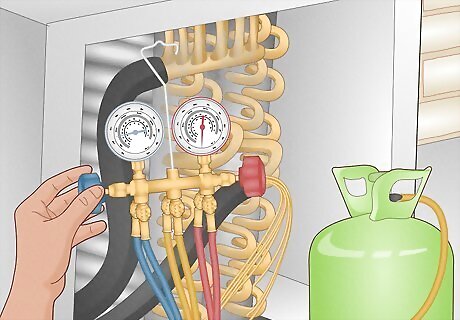
Have a professional refill the refrigerant in your system. If your system blows warm air and leaks, it’s low on refrigerant. Unfortunately, refrigerant is one of those toxic chemicals that you can’t handle without training. Contact a local HVAC technician and have them take a look at the system. They’ll refill your AC’s refrigerant lines if necessary. If your evaporator coil is covered in ice, it’s another huge sign that you’re low on refrigerant. The other reason to have an HVAC pro do this repair is that your refrigerant really shouldn’t leak. A little passive loss over 10-20 years could be normal, but you may have a problem elsewhere.
What to Do if the Unit Still Leaks
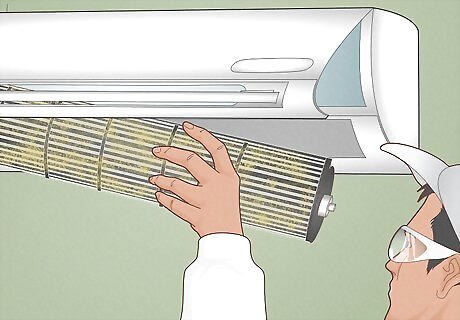
Call a professional HVAC technician for unfixable leaks. You might have a bad blower or pump, but that’s not a DIY job. If your ductless system still isn’t working after a little troubleshooting, contact a professional to take a look. It can be tricky to make these repairs if you haven’t had any HVAC training.
Fixing a Leaky Window Unit
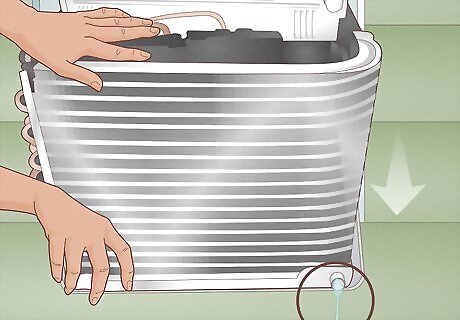
Check the drainage hole and reorient the unit in the window. If your window unit is leaking, clear the drainage hole on the bottom. Unplug it to the let the water drain. Then, confirm that the angle of your window unit is sloping down and away from the window. If it’s flat or tilted inward, the water will spill inside of your home. If your window unit is still leaking after you’ve cleared the drainage hole and fixed the angle, it’s probably time to get a new window unit.



















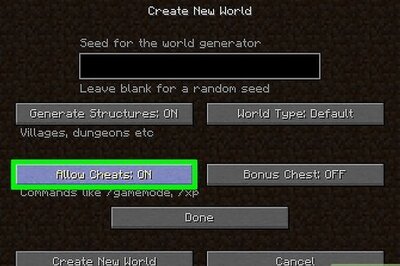
Comments
0 comment